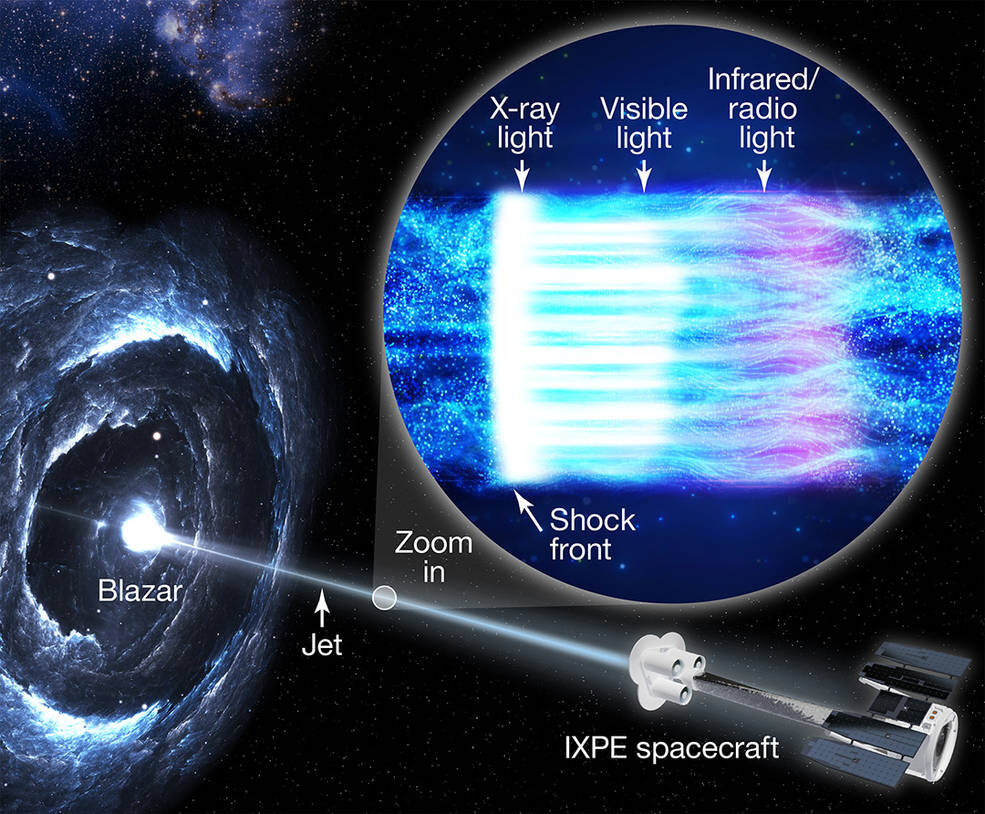The IXPE mission studied the jets ejected from a blazar in polarized X-ray light. This supermassive black hole is turned towards us by its pole, which allows us to study the processes that take place on it.

Blazars and the IXPE mission
Blazars are located in the centers of black holes and actively emit energy. They differ from the rest of the quasars in that their poles are directed almost in the direction of the Earth. Because of this, the jets that burst out of them with relativistic velocities appear extremely bright to us.
But even under such conditions, it was difficult for scientists to understand the details of the process that accelerates matter almost to the speed of light. Most of the energy is emitted in the X-ray range, and our atmosphere effectively blocks it.
The NASA IXPE mission helped to understand what is happening. It is a satellite that observes distant space in polarized X-ray light. This device was launched into orbit in December 2021. Recently, it already helped solve the mystery of the supernova remnant Cassiopeia A.
IXPE research
Polarization is the process of aligning electromagnetic oscillations in a certain plane. It is most often used in the visible part of the spectrum. However, it also occurs for X-ray waves and can tell a lot about the processes that gave rise to it.

For research, scientists chose a blazar in the active galaxy Markarian 501. It is located in the constellation Hercules. IXPE observed the supermassive black hole for three days in early March 2022 and repeated the observations in two weeks.
At the same time, Markarian 501 was also observed in other ranges: optical, infrared, radio. Then scientists analyzed and compared what they saw.
What research has shown
Studies have shown that the polarization of radiation in the X-ray range is much stronger than in the optical range, but in visible light it is stronger than in radio waves. At the same time, all three types of electromagnetic oscillations are aligned in the same plane.
According to the researchers, this situation corresponds to a scenario where something moves through the medium faster than sound can travel through it. The latter is also a fluctuation, but it is purely physical, unlike electromagnetic waves.
When the relativistic jet from the blazar passes through the gas cloud surrounding it, the particles collide, causing sudden changes in pressure. A shock wave is generated, which propagates through the medium, transferring energy to the particles and forcing them to emit it with the same polarization as in the initiating jet.
However, the further they spread from the source, the less their energy becomes. The particles begin to emit at longer and longer wavelengths, while the polarization is increasingly disturbed. This explains its decrease when moving from the optical range to radio waves.
According to Phys.org

